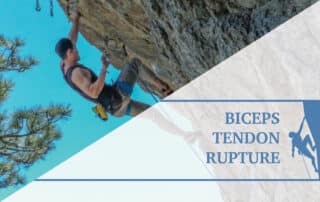Brachialis Tendinopathy in Climbers
You’re noticing improvements in your climbing, but you are starting to feel a bit broken down and are developing some mild pain in the front of your elbow that worsens after a long week of training and climbing. You even notice a bit of swelling in your elbow. What should you do?
Thoracic Outlet Syndrome in Climbers
Thoracic Outlet Syndrome is a diagnosis of exclusion, meaning there can be other causes of pain and numbness, such as cervical radiculopathy or other nerve entrapments, that may not be due to true TOS. Learn more about how to diagnose and treat the condition.
Rock Climbing Finger Tenosynovitis
Tenosynovitis, or inflammation of the finger flexor tendon sheath (synovium), is a common overuse syndrome that climbers may experience. There are 2 musculotendinous units that could be involved, the flexor digitorum superficialis (FDS) and flexor digitorum profundus (FDP).
Biceps Tendon Rupture in Climbers
Although biceps tendon ruptures rare among climbing athletes, this article provides both climbers and clinicians a guideline to identify the injury if it occurs. Additionally, it provides a guideline to help understand the course of conservative rehab following surgical intervention of a distal biceps tendon rupture.
Achilles Tendonitis Rock Climbing
The Achilles tendon is the tendon from the gastrocnemius and soleus muscles. This tendon attaches directly to the heel of the foot. The tendon allows the gastroc-soleus complex to lift the heel off the ground, walk, and generate power during dynamic movements.
Rock Climbing Injury: Ankle Sprain Rehab
Ankle sprains are the most common injury in the lower leg. This injury occurs when downward force is applied to an ankle in an inverted position, with the big toe side of the foot up, and the little toe side down.






